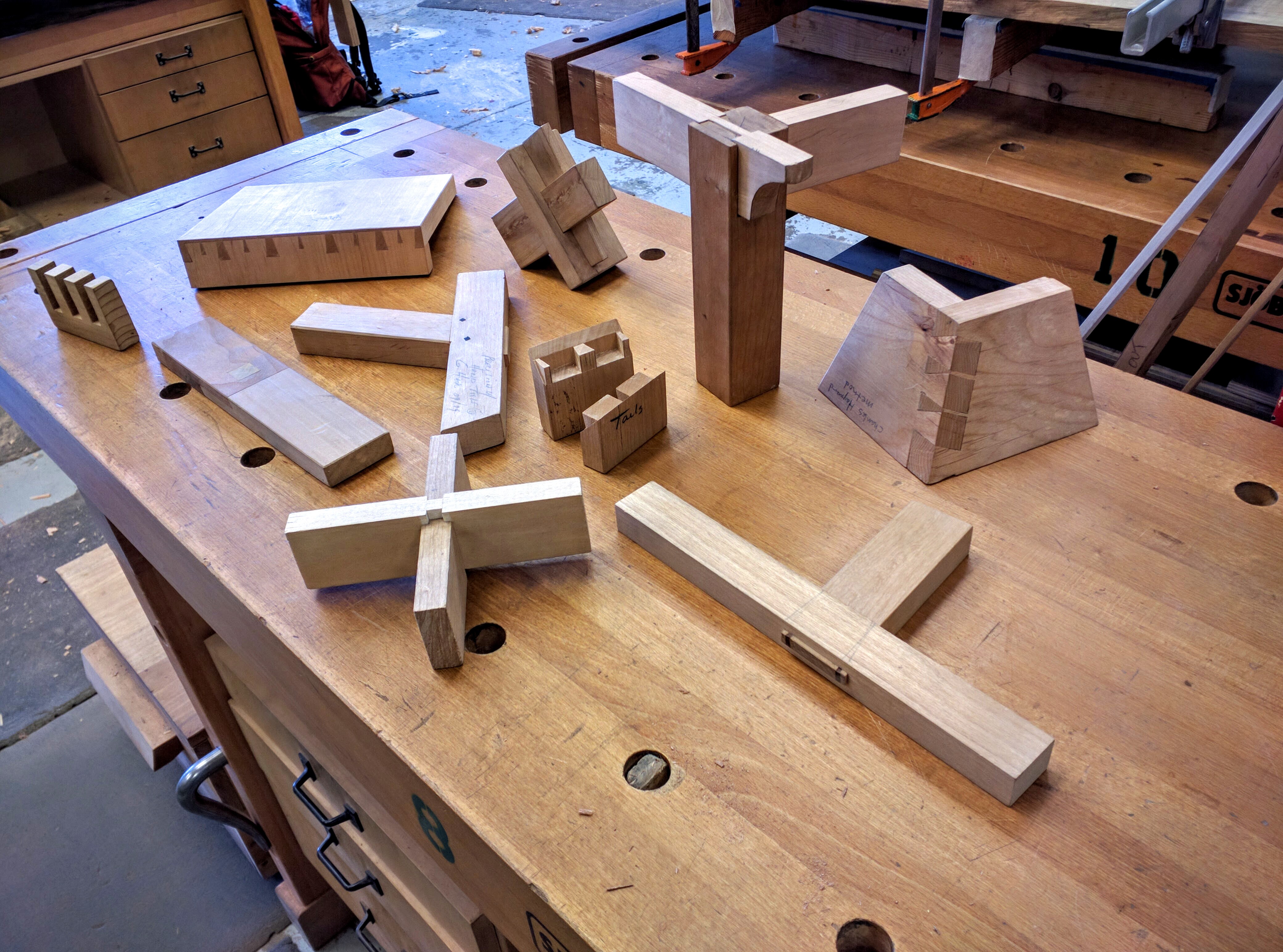It’s all about the joint.
The best joint in the joint (or at least in the furniture piece you are building) is the joint that will provide the most secure, longest lasting, and aesthetically pleasing solution. Luckily, the last part of the equation almost always follows by default: If a joint is appropriate to the structurally needs in play, then it is almost always appropriate in appearance.
To fulfill the first requirement of security, you first look to see what strains are being delivered to that particular juncture. The joint needs to be configured to directly (or as closely as possible) counteract that strain. For example, the face of drawer must resist being pulled away from the loaded box behind it–and that is what dovetails do best. But only if the tails appear on the end edges of the drawer face. The key factor is to configure the joint so that any tension or compression forces are placed directly in line with the grain of the wood…and to present as much of that end grain surface to the strain as possible. A good example here would be the classic mortise and tenon joint–wedged or pinned doesn’t matter. What does matter is that the piece of wood with the tenon is held tightly to the mating piece with the mortise. The strength of the joint comes from the resistance to compression offered by the end grain surrounding the tenon (which happens if the pieces are being strained to a different meeting angle).
For longevity in most furniture-scale joints, you will want to avoid softwood structural members (softwood crushes more easily than most hardwoods where its side grain meets end grain connections). You also want to allow plenty of wood to run out beyond a hole for a pin (or slot for a key) as tension forces will be focused on the long grain adhesion (i.e. the lignin) past that connector. Finally, in order to qualify as a true joint, the forces involved must never be carried by a fastener or a film of glue—unless you are OK with creating knock-down furniture.



